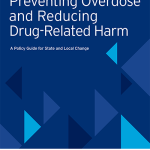Payments from opioid settlements — expected to total more than $50 billion over the 18-year period from 2022 to 2040 — are being disbursed to state, local, and tribal governments across the United States. These funds provide a critical opportunity for policymakers to invest in public health interventions that save lives and mitigate growing racial inequities in overdose deaths.
A new resource from ChangeLab Solutions and Prevention Institute — Supporting Decision Makers Using Opioid Settlement Funds: Making Meaningful Investments at the Local Level — can support local leaders as they work to maximize the impact of opioid settlement funds and respond to their communities’ needs. City and county leaders are well-positioned to advance policies and programs to reduce overdose and other drug-related harms. They can use settlement funding to advance evidence-based strategies and tailored interventions that aim to rectify the harms experienced by communities of color, people with low income, people who are unhoused, and others who face disproportionate risk of overdose.
Localities can use settlement funding to advance evidence-based strategies and tailored interventions that aim to rectify the harms experienced by communities of color, people with low income, people who are unhoused, and others who face disproportionate risk of overdose.
While local governments may be able to implement tailored interventions more quickly than their state and federal counterparts, they may also face complex challenges, including federal and state policy barriers to harm reduction, as well as inadequate funding, infrastructure, or staff capacity to scale and sustain necessary interventions. The new resource outlines key strategies that local decision makers can explore to guide planning and implementation of their settlement activities. It also describes the approaches that some localities have taken to maximize the impact of their opioid settlement funds, highlighting efforts in Milwaukee County, WI; Allegheny County, PA; and Mecklenburg County, NC.
9/30/2024
